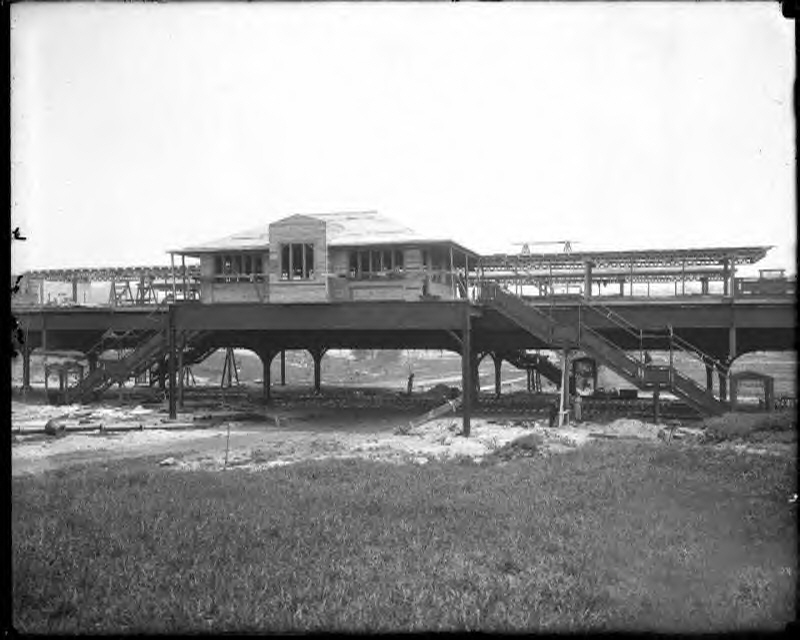4. Inwood was once home to Manhattan’s last family-owned farm

Through the early years of the 20th century, Inwood remained one of Manhattan’s most rural sections, and was described by Robert Perkins during the retirement ceremony of Reverend George Shipman Payson — pastor of the Mount Washington Presbyterian Church — as “a veritable wilderness, isolated from the rest of the city.” The neighborhood’s development began to pick up particularly after the extension of the 1 train to 207th Street, which prompted the construction of new apartment buildings on the east side of Broadway.
One of the most striking structures that formed as part of the neighborhood’s early industrial development was the Dyckman Oval, a sports venue that hosted boxing, wrestling, football, soccer, amateur baseball, and ice skating competitions. With a capacity of 4,500 occupants, the Dyckman Oval was constructed in 1915 on a triangular block bounded by Nagle Avenue, 204th Street, 10th Avenue, and Academy Street. The park was best known as being a home for Negro league baseball, with games being played by the independent black team the Cuban Stars as early as 1917. Despite its initial success, the park’s stands were demolished during the off-season of 1937-1938, and the space was turned into public housing in the 1950s.
As Manhattan’s rural land grew more developed, the farms that had once defined the area began to close. By the 1930s, Inwood was home to Manhattan’s last family-owned farm — run by the Benedetto family, who moved to the area in 1924. The farm was located close to the intersection of Broadway and 214th Street, occupying an entire city block. Crops grown on the farm included corn, tomatoes, lettuce, and string beans, with pear and peach trees providing an assortment of fresh fruits. In addition, the farm was home to chickens, rabbits, a goat, and a horse used for plowing the land. After being sold in 1954, the farm’s land was developed, closing the book on both Inwood and Manhattan’s rural holdings.





